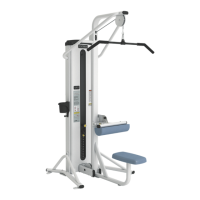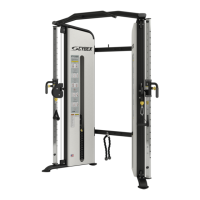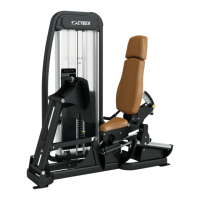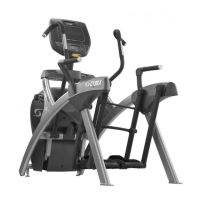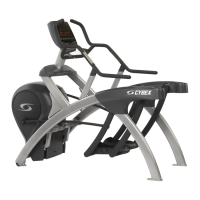CYBEX VR2 Owner’s Manual
The Hamstring
• Knee Flexion - The hamstring group is responsible
for flexion of the knee joint. The hamstrings also
cross the hip joint and are responsible for hip
extension. It should be noted that any movement
of the hip joint during resisted knee flexion usually
decreases the effectiveness of the exercise by
allowing unrelated change in the hamstring’s
length.
• Range of Motion - The normal range of motion is
generally considered to be -10 to 135 degrees. The
hamstring is limited by mechanical disadvantage
near full extension (eccentric “lowering of the
weight”). Due to the direction of resistance and the
availability of hyperextension at the knee, it is
advised to limit the eccentric movement just short
of full extension. Flexion is only limited by concentric
control.
• Associated Muscles - The gastrocnemius is an assistant mover for knee flexion. It can be
discouraged from use by attempting to completely relax the ankle muscles or by plantar
flexing the ankle. Plantar flexion shortens the gastroc and as knee flexion occurs the muscle
will achieve a condition of “active insufficiency”. However, the fact that the gastroc is
involved in plantar flexion can further its involvement through much of the knee motion.
Dorsiflexion encourages gastroc contraction. The gracilis, sartorius and plantaris are also
assistant movers for knee flexion.
MUSCLES TRAINED
Exercise
Page 3-10
